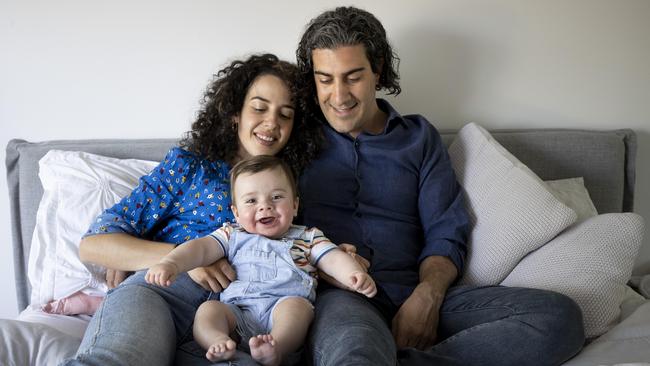Budget 2022: Millennial parents wield power in nappy valleys
Millennial parents raising young children are the new political ‘swingers’, elbowing aside the Baby Boomers as the generation with the most electoral muscle.

Millennial parents raising young children are the new political “swingers’’, elbowing aside the Baby Boomers as the generation with the most electoral muscle to shape public policy.
Living in the nation’s “nappy valleys’’ – predominantly Labor strongholds where families with babies and preschool children abound – many aspirational voters aged 25 to 39 turned against Labor in the last election, even as Anthony Albanese led his party to power for the first time in nine years.
Labor’s first federal budget in a decade reflects the Millennials’ focus on childcare, cost of living and gender equality, as they are caught in the chaos of juggling careers and children.
Census and Australian Electoral Commission data reveal that, despite winning the May election, Labor’s primary vote slumped in many nappy valley seats populated by aspirational “battlers’’.
Demographer Mark McCrindle said Generation Y – otherwise known as the Millennials – wanted government to control the cost of living and provide quality childcare, education and health care for their growing families.
He said idealistic young Australians tended to become more conservative once they had children.
“They’re moving from the single-life stage when they’re more progressive to the family stage, where they value financial conservatism, sensible budgets and government support instead of getting in the way,’’ he said.
“They have a bigger mortgage than their parents had and are still paying off HECS debt (from student loans), so they’re under a lot of stress. They’re juggling a lot.’’
The Australian’s data analysis shows that Labor holds 25 of the 30 top “nappy valley” electorates, where children aged four and under make up the highest proportion of the population.
These include large swathes of Melbourne, where Labor’s primary vote dropped sharply in May, including the outer metropolitan seat of Lalor, which boasts Australia’s highest proportion of children younger than four.
In Lalor, under-fours make up 8.7 per cent of the population – 50 per cent higher than the national average of 5.8 per cent. Labor managed to hold the seat despite a 7.5 per cent drop in its primary vote, as voters turned right towards One Nation and the United Australia Party.
In the seat of Scullin, where 6.6 per cent of residents are younger than four, the ALP suffered a 14 per cent primary-vote swing as the major parties’ vote splintered.
Labor lost 10 per cent of its support in the nappy valley seats of Gorton, Holt and Calwell – perhaps reflecting a ballot-box backlash against the world’s longest lockdown in Victoria.
Labor also suffered primary vote falls in nappy valley seats outside Victoria, including an 8 per cent swing in Hughes, in Sydney’s southwest, where 6.2 per cent of residents are preschool children. The Liberals retained the seat despite a swing to independent Georgia Steele and the UAP.
Labor support plunged 8 per cent in Werriwa, in Sydney’s west, where under-fours make up 7.1 per cent of residents. Voters turned away from Labor and the Liberals to the right-leaning Liberal Democrats, One Nation and UAP.
Other young electorates where Labor lost votes were Spence in South Australia and Lingiari in the Northern Territory.
The only nappy valley seats where Labor did exceptionally well were in WA, with big primary vote increases in Pearce and Hasluck, both gains from the Liberal Party, as well as Cowan and Burt.
Mr McCrindle said Millennial voters were wielding their “demographic and economic power’’.
“They’re in the peak years of earnings, are paying the most income tax of any generation and the most GST as they’re spending on their families,’’ he said. “They’re the largest generation in the workforce – they’re working hard and that makes them tune into government policy and push back when government is not making it easy for them.’’

To join the conversation, please log in. Don't have an account? Register
Join the conversation, you are commenting as Logout